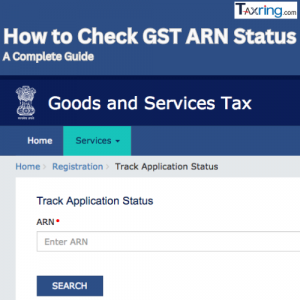
GST Payment Status: How to Track your GST Payment online ?
Tracking your GST payment status is essential to ensure compliance and avoid penalties. Following the steps outlined above will help you manage payments, resolve issues, and stay on top of your tax obligations efficiently.vvThe Goods and Services Tax (GST) system in India has streamlined tax compliance, allowing businesses to make GST payments conveniently online. Once a GST payment is made, tracking the status is crucial to ensure that the payment has been successfully processed and to avoid potential penalties. This article provides a comprehensive guide on tracking GST payment status, handling issues like failed payments, and understanding other essential aspects of GST payment.
What is GST Payment ?
GST payment refers to the process where businesses remit their GST liabilities for goods or services supplied. GST is an indirect tax that applies at every stage of the supply chain. Businesses collect GST from customers and pay it to the government. Payment schedules depend on the taxpayer’s category, with deadlines that must be adhered to in order to avoid penalties.
Who Should Pay GST
Various categories of taxpayers in India are required to pay GST:
- Regular Taxpayers: Businesses with turnover above a prescribed limit.
- Composition Scheme Taxpayers: Small businesses that opt for a simplified GST scheme with a fixed rate.
- Casual Taxable Persons: Entities with occasional supply of goods or services.
- Non-resident Taxable Persons: Foreign entities supplying goods or services within India.
Each type has specific timelines and payment methods.
GST Payment for Different Taxpayers
The GST payment schedule differs based on the taxpayer’s category:
- Regular Taxpayer: Monthly payments via GSTR-3B for tax liability and GSTR-1 for outward supplies.
- Quarterly Taxpayer (QRMP Scheme): Small taxpayers who file quarterly returns but make monthly payments.
- Nil Return Taxpayers: Taxpayers with no sales must still file a ‘nil’ return.
- Composition Scheme Taxpayers: Quarterly payments at a fixed rate on turnover, with annual GSTR-4 filing.
GST Payment Process
To complete a GST payment, follow these steps:
- Generate a GST Challan: Log in to the GST portal and create a challan.
- Enter CPIN: A unique CPIN is generated, which helps track payments.
- Select Payment Mode: Options include net banking, debit/credit card, UPI, or OTC.
- Confirm Payment: Complete the payment, and save the GST receipt for your records.
Methods for Making a GST Payment
The GST portal provides several payment options:
- Online Payment: Pay through net banking, debit/credit cards, or UPI.
- Bank Payments: Large payments can be made through NEFT/RTGS at authorized banks.
- Over-the-Counter (OTC) Payment: Payments below INR 10,000 can be made via cash, cheque, or demand draft.
- Unified Payments Interface (UPI): A convenient mobile payment method for GST.
How to Generate a GST Challan on the GST Portal?
To generate a GST challan:
- Log in: Access the GST portal using your credentials.
- Go to Payments: Under the ‘Services’ tab, select ‘Create Challan.’
- Fill in Details: Enter tax liability and payment mode.
- Generate CPIN: A 14-digit CPIN is generated, tracking your payment status.
How to Pay GST Online
Follow these steps for online GST payment:
- Log in to the GST Portal: Use your GSTIN and password.
- Generate a Challan: Create a payment challan.
- Select Payment Method: Choose from net banking, debit/credit card, or UPI.
- Complete Payment: Submit payment and save the GST receipt.
How to Make GST Payment Offline
For offline payments:
- Generate a Challan: Log in to the GST portal and choose NEFT/RTGS or OTC.
- Visit the Bank: Take the challan to an authorized bank and make the payment.
- Track Payment: Use the CPIN to check the payment status on the GST portal.
Importance of GST Cash and Credit Ledger for GST Payment
The GST portal maintains two ledgers for taxpayers:
- Cash Ledger: Records payments toward tax liabilities.
- Credit Ledger: Records input tax credits used to offset liabilities.
These ledgers help taxpayers track transactions and credits.
GST Payment Rules
GST payments must be made on or before the due date. Different taxpayer categories have specific rules to ensure timely compliance.
GST Payment Due Dates for Different Taxpayers
Due dates vary based on taxpayer type:
- Regular Taxpayers: Monthly payments by the 20th of each month.
- Quarterly Taxpayers: Payments due quarterly under the QRMP scheme.
Interest on Late Payment of GST
If payment is delayed, interest at 18% per annum is charged on the outstanding amount. Timely payments prevent interest from accumulating.
Steps to Track GST Payment Status Online Before Logging In
For a quick update:
- Visit the GST Portal: Go to https://www.gst.gov.in.
- Access Track Payment Status: Under 'Services,' click ‘Payments’ > ‘Track Payment Status.’
- Enter CPIN: Provide the CPIN and Captcha code.
- View Status: Check if the payment is successful, pending, or failed.
Steps to Track GST Payment Status Online After Logging In
For a detailed view:
- Log in: Use your GSTIN and password.
- Go to Payments: Under ‘Services,’ select ‘Track Payment Status.’
- Enter CPIN or Check History: Track specific payments or view your full payment history.
- Download Receipt: Save the payment receipt for future reference.
Steps to Follow if GST Payment Fails
If a payment fails:
- Recheck Payment Status: Use CPIN to confirm the status.
- Retry Payment: If marked as ‘Failed,’ generate a new challan and try again.
- Bank Communication: If money was deducted but not reflected, contact your bank.
- Raise a Grievance: File a complaint on the GST portal under ‘Help & Taxpayer Services.’
Related article: GST Registration Online: Documents Required / GST Return filing / what is GSTR-3b filing?
Frequently Asked Questions
- How can I track my GST payment status online?
- Use the CPIN in the GST portal’s ‘Track Payment Status’ section.
- What is CPIN in GST?
- The Common Portal Identification Number (CPIN) is a unique 14-digit identifier for each GST transaction.
- How do I download my GST payment receipt?
- Log in to the GST portal and access your payment receipt under 'Electronic Cash Ledger' in 'Ledgers.'
- How to verify if GST is paid by my supplier?
- Check GSTR-2A or GSTR-2B on the GST portal for your supplier’s payment status.
- What to do if GST payment fails?
- Retry the payment and contact your bank if necessary. Raise a grievance if unresolved.
- Can I make GST payments offline?
- Yes, via NEFT/RTGS or OTC at authorized banks using a GST challan.
- How to track GST payment without CPIN?
- Log in to the GST portal to access your full payment history in 'Ledgers.'
- What happens if I miss the GST payment deadline?
- Late payments incur an interest rate of 18% annually.
- When is the GST payment due date for regular taxpayers?
- The 20th of each month, for the previous month’s tax liabilities.
- Can I view my entire GST payment history?
- Yes, access it under ‘Electronic Cash Ledger’ or ‘Credit Ledger’ on the GST portal.




